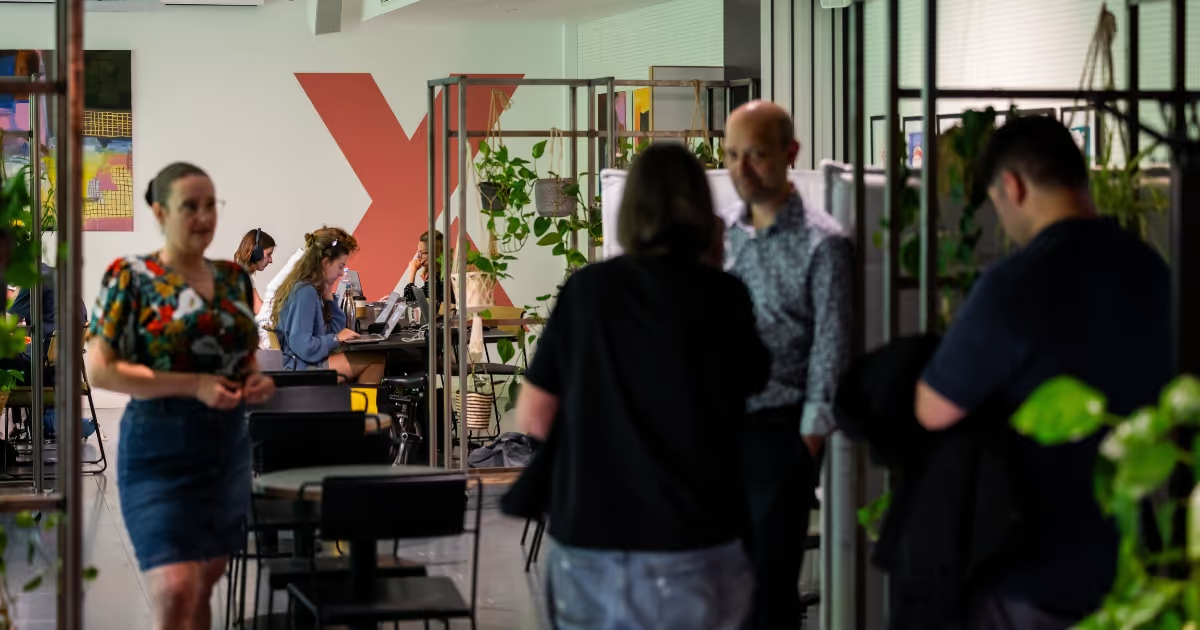Work Together Anywhere by Lisette Sutherland and Kirsten Janene-Nelson is a handbook for individuals, teams and managers looking to successfully make the transition into a collectively remote world. Taking on the future of office work by examining the benefits that flexible remote work options can provide, it outlines the skills and mindset required to work or manage a team in this capacity, as well as detailing the technology of today that can facilitate the process.
Work Together Anywhere by Lisette Sutherland and Kirsten Janene-Nelson is a handbook for individuals, teams and managers looking to successfully make the transition into a collectively remote world. Taking on the future of office work by examining the benefits that flexible remote work options can provide, it outlines the skills and mindset required to work or manage a team in this capacity, as well as detailing the technology of today that can facilitate the process.
{{divider}}
Nobody romanticises a rush-hour commute or getting stuck in traffic, just as they don’t glorify having to choose between your favourite city and somewhere alienating with a higher availability of jobs. These days, thanks to the flexibility and accessibility of the internet, the changes catalysed by COVID, and a greater focus on work and employee wellbeing, careers are increasingly becoming assets rather than obstacles to realising our potential and fulfilling our dream occupations.
{{divider}}
Many studies and experiments have already demonstrated that working remotely can enhance motivation, productivity and engagement, and managers and employees alike are increasingly finding that the benefits of remote work outweigh the more traditional office experience. There are several reasons for this including increased autonomy, more time with family, a greater ability to define your own schedule and better time management. According to a 2017 survey by Flexjobs 76% of respondents said they’d be more productive working remotely because of fewer distractions from colleagues, and 70% reported reduced stress levels from being able to cut out the commute.
{{divider}}
In 2014 Harvard Business Review also measured the productivity of both on and off-site call centre employees for remote Chinese travel website, Ctrip. It found that after 9 months, those working from home made 13.5% more calls than in-house employees, which accumulated to the equivalent of an additional day per week. Nicholas Bloom, one of the creators of the study, suggested that some of the potential reasons might be fewer distractions than in the office, reduced commute time, shorter breaks and far fewer sick days.
{{divider}}

A competitive advantage
{{divider}}
Organisations are finding that offering flexible, remote options is translating into direct competitive advantage not just in the form of productivity, but also in terms of loyalty, commitment and reduced overheads. Hiring new employees comes with added costs including training, on-boarding and other incidentals. The same 2017 Flexjobs survey found that 62% of respondents had left their previous employment because of a lack of flexible roles, with 79% asserting that such arrangements would make them more loyal to their employers, and 73% maintaining that it would also lead to better relationships both inside and outside the workplace.
{{divider}}
This is increasingly demonstrating itself to be a win-win solution for both employers and employees alike, with Global Workplace Analytics reporting that the annual savings on real-estate expenses for each full-time worker can equate to as much as $10,000 in London, all of which could be better re-invested into other aspects of developing the business. Similarly, as a company expands, it may find that the expertise that they require is not located within a 20 mile radius. Today, the talent of Silicon Valley is almost as accessible to a tech start-up in London as it is in the States.
{{divider}}
Flexible workspace solutions are stepping up to the plate when it comes to meeting the requirements of this fresh supply of increasing demand. Offering companies and employees the best of both worlds with a range of adaptable solutions for individuals and corporate clients alike, co-working spaces, smart offices, hot-desking and satellite HQs are becoming popular, integrative solutions. Some of the most common complaints about working from home include a lack of professional facilities and a sense of isolation, especially for employees that live alone. Shared office spaces supply an engaging like-minded community at readily affordable fees and contract-lengths, from a variety of locations close to home.
{{divider}}
Trusting Solutions
{{divider}}
The remote workplace fosters important human values such as trust. Many employers have previously been hesitant to adopt a remote-work model due to an inability to visually monitor their employees. While monitoring software is an appealing solution to some, it can cultivate a sense of mistrust. This can include screen recording, keystroke tracking and hourly logging. Entrepreneur Bart Van Loon warns that such controlling methods are counterproductive and can lead to sub-par results over time. For example, if an employee feels pressurised to constantly appear to be working, some processes or tasks which would benefit from careful deliberation or creativity could be rushed.
{{divider}}
By centring collaborations around achievable, concrete goals, tasks can be prioritised and delegated accordingly. This better fosters both trust and transparency, while focusing on work that is of quality above quantity. Working remotely requires honing in on a slightly different skillset from the daily face to face. Communication may more often be virtual or written, and co-ordination may require a different streamlining of processes between multiple coworkers. Remote workers need to be self-sufficient, organised and independent. Teams value reliability, as well as accountability and openness to feedback.
{{divider}}
While cutting the commute has huge advantages, failing to establish a more disciplined routine can lead to poor mental health, overworking and burnout, or succumbing to added distractions. Stanford University conducted a study into locating the source of multi-taskers productivity, and found that the biggest benefits came from changes in the environment, including minimising distractions from technology such as mobile phones, and focusing on the task at hand. To help with this, some teams find benefit in setting shared ground rules such as responding to questions or emails only every few hours or so. Researchers also found that tasks should be narrowed down to a maximum of 3 at any one time.
{{divider}}
One of the added benefits of having a flexible remote schedule, is that employees are at liberty to decide when they work best during the day or week. Whereas early birds can polish off their most difficult tasks as the sunrises, evening owls can save them for the late-night power hour instead. Task managers such as Trello allow teams to share when certain tasks have been completed, nurturing trust among colleagues while being equally motivating. Before COVID, managers frequently reported that their predominant concerns about remote work lay around productivity, accountability and reachability. However, as increasing numbers of them have been forced to adopt the approach, these have been far less of a problem than originally feared, with the predominant concern now shifting to communication.
{{divider}}
On-site to online
{{divider}}
The shift to remote working is not just impacting the office set-up, but its also having effects on the hiring process. Robert Rogge co-founder of the freelance translation website Zingword, reinforces that interviews are now a chance to focus on communication skills as well as technical aptitude. When interviewing for remote positions, there’s often now an incorporation of the tools that will be increasingly required for such a job into the hiring process, including video conferencing and team-specific apps such as Slack, Toggle or Teams. Some questions might even specifically focus on the remote working experience, and people’s different learning and working styles in an off-site capacity.
{{divider}}
These tweaks and changes have knock-on effects on the on-boarding process, including bi-monthly virtual team meetings to keep larger teams connected. At NASA, in-house workers collaborate remotely with astronaughts on the International Space Station, they connect every new scientist with a personal buddy - in their case, support staff - who is available to answer any questions that may crop up as they learn the ropes. Luckily, most on-site benefits today are easily adapted into online benefits that span cities, countries, time zones, and even outer space.
{{divider}}
Working together anywhere is no longer an option for a select few. Companies looking to stay relevant are embracing the remote world and allowing it to transform their vision and goals. Strengthening relationships between teams in such a position requires virtual feedback loops, strong communication skills, aligned values and goals, voicing criticisms and asking questions. Flexible workspaces offer increasingly innovative solutions that serve to enhance the distributed network and allow individuals to extend bridges and branches to a diverse array of workers not immediate connected to their direct place of work. Business and society at their most fundamental level are about the interconnection of different relationships, and creating and maintaining these are just as viable in the remote world, as in the traditional on-site office.
{{divider}}





.png)
.avif)


.avif)


.avif)
.avif)



